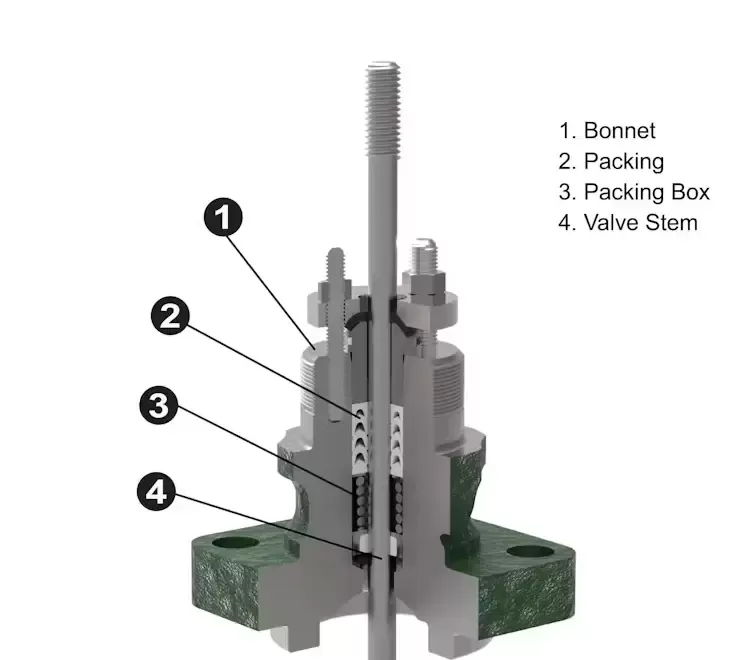Notifications

10 minutes, 21 seconds
-12 Views 0 Comments 0 Likes 0 Reviews

Introduction
We are a leading control valve manufacturer in China, providing high-quality valves and control actuators designed to meet the specific needs of various industries.
In the world of industrial process control, ensuring reliable valve performance requires more than just selecting the right valve body or actuator. An often overlooked yet crucial component to valve integrity and efficiency is the valve packing. While it may seem like a minor detail, the proper selection and installation of valve packing are essential for maintaining sealing performance, preventing fugitive emissions, and ensuring long-term operational safety.
Before diving into the criteria for selecting control valve packing, it’s important to first understand what valve packing is, how it functions within different types of valves, and why it matters.
Control valves are typically categorized into two basic designs: sliding stem and rotary. A sliding stem valve includes a rod or stem that moves up and down through the valve body to regulate flow, while a rotary valve uses a rotating shaft to control the position of a disc, ball, or plug. In both cases, the valve stem or shaft must pass through the valve body, creating a potential leak path.
This is where valve packing comes into play. Valve packing is the sealing system located around the stem or shaft at the point where it exits the valve body. It prevents process media—whether gas, liquid, or vapor—from escaping into the environment, while allowing the valve to operate with minimal friction and wear.
Typically, the sealing mechanism consists of stacked rings made of flexible materials such as PTFE (polytetrafluoroethylene) or graphite. These rings are compressed using a combination of a packing follower, packing flange, and bolts to create a tight seal against the valve stem or shaft. When correctly selected and maintained, packing can offer years of reliable, leak-free operation.
Different process conditions require different packing materials. The right choice depends on factors such as temperature, pressure, media type, environmental regulations, and maintenance needs. Below, we explore some of the most common packing materials used in industrial control valves.
PTFE, commonly known by the brand name Teflon, is a synthetic fluoropolymer known for its unique physical properties. It is a popular choice in many industrial applications due to its low friction, high chemical resistance, and non-reactivity.
Advantages of PTFE Packing:
Chemical Inertness: PTFE is resistant to almost all chemicals, including strong acids, bases, and solvents, making it ideal for chemical plants and industries handling aggressive fluids.
Low Friction Operation: The slippery surface of PTFE reduces friction between the packing and valve stem, leading to smoother valve motion and reduced wear.
Moderate Temperature Tolerance: PTFE can function well in temperatures up to approximately 250°C (482°F), which is suitable for many moderate applications.
Non-Stick Properties: PTFE resists bonding to valve stems, making it easier to adjust or remove, which helps during maintenance.
Disadvantages of PTFE Packing:
Limited High-Temperature Capability: PTFE begins to degrade at temperatures above 250°C and may lose its mechanical properties.
Vulnerability to Creep and Cold Flow: Under constant pressure or heat cycling, PTFE can deform permanently over time, potentially compromising the seal.
Not Ideal for High-Pressure Steam Applications: PTFE may wear quickly in high-pressure or high-temperature steam environments, especially if abrasive media are present.
Flexible graphite packing is commonly used in high-temperature and high-pressure environments where PTFE may not perform well. This material is manufactured from exfoliated graphite flakes, which are pressed into ring shapes or braided into packing sets.
Advantages of Graphite Packing:
High-Temperature Resistance: Graphite can withstand temperatures up to 450°C (842°F) in oxidizing atmospheres and even higher in inert conditions, making it ideal for steam and hydrocarbon services.
Excellent Thermal Conductivity: This property helps dissipate heat more efficiently, reducing stem damage and increasing packing lifespan.
Low Emissions: Graphite is often used in emission-critical services because it can maintain tight seals under thermal cycling and stem movement.
Resilience Under Pressure: Graphite performs well under extreme pressure without losing its sealing capabilities.
Disadvantages of Graphite Packing:
Chemical Sensitivity in Oxidizing Environments: While graphite itself is carbon, it can oxidize at high temperatures in the presence of oxygen, leading to degradation.
Abrasion and Stem Wear: Graphite can be abrasive and may cause wear on valve stems over time, especially if not properly coated or lubricated.
Cost: Graphite packing is typically more expensive than PTFE, though its superior high-temperature performance justifies the investment.
Metallic or composite packing systems are used for ultra-high-temperature or pressure applications. These typically incorporate layers of metal wire mesh, foil, or metal-reinforced graphite, and some applications use metal spring-loaded packing systems to maintain consistent preload on the packing.
Applications of Metal Packing:
Refineries and Power Plants: Where superheated steam or hydrocarbon vapors are present at extreme temperatures.
Nuclear Facilities: Where zero-leakage and durability standards are strict.
Severe Service Control Valves: Where vibration, cycling, and extreme thermal variations are common.
Considerations:
Installation Complexity: Metal-based packing requires careful installation and specialized tools to avoid damage or reduced performance.
Stem Finish and Hardness: Since metal materials can be abrasive, valve stems must have a high-quality surface finish and hardness to resist wear.
When choosing the right valve packing, several other factors should be considered to ensure long-term valve performance and safety:
Fugitive Emissions Compliance: Environmental regulations, particularly in chemical and petrochemical industries, require control valve packing to meet strict fugitive emissions standards (e.g., ISO 15848, API 622).
Stem Surface Finish and Hardness: A smoother surface finish on the valve stem reduces wear on packing materials, while a harder stem surface can resist abrasion.
Packing Configuration: The arrangement of packing rings (preformed rings, braided sets, die-molded shapes) can influence both performance and maintenance needs.
Live-Loaded Packing Systems: These systems automatically apply a constant load to the packing via springs or Belleville washers, compensating for wear or thermal cycling.
Even the best packing material will fail if not installed or maintained properly. Here are a few key practices to ensure optimal performance:
Use the Correct Torque: Avoid over-tightening, which can cause excessive friction, or under-tightening, which leads to leaks.
Follow Manufacturer Specifications: Always refer to the manufacturer’s guidelines for correct installation and ring orientation.
Monitor Packing Adjustment: Periodically check and adjust the packing flange bolts to compensate for wear, especially after startup.
Replace When Necessary: Packing is a consumable item and should be replaced when signs of leakage or wear appear.
Control valve packing plays a vital role in maintaining seal integrity, reducing environmental emissions, and ensuring efficient valve operation. Whether dealing with corrosive chemicals, high-pressure steam, or sensitive clean-room environments, selecting the right packing material for your application is crucial.
PTFE is ideal for chemical resistance and smooth operation in moderate environments, graphite excels in high-temperature and high-pressure conditions, and metal or composite packings provide the durability needed for extreme conditions. When combined with best practices for installation and maintenance, proper packing selection can significantly extend the service life of control valves and reduce operating costs.
In today’s demanding industrial landscape, where performance, compliance, and sustainability are top priorities, valve packing is no longer an afterthought — it’s a strategic decision.Know more about Google SEO Directory

